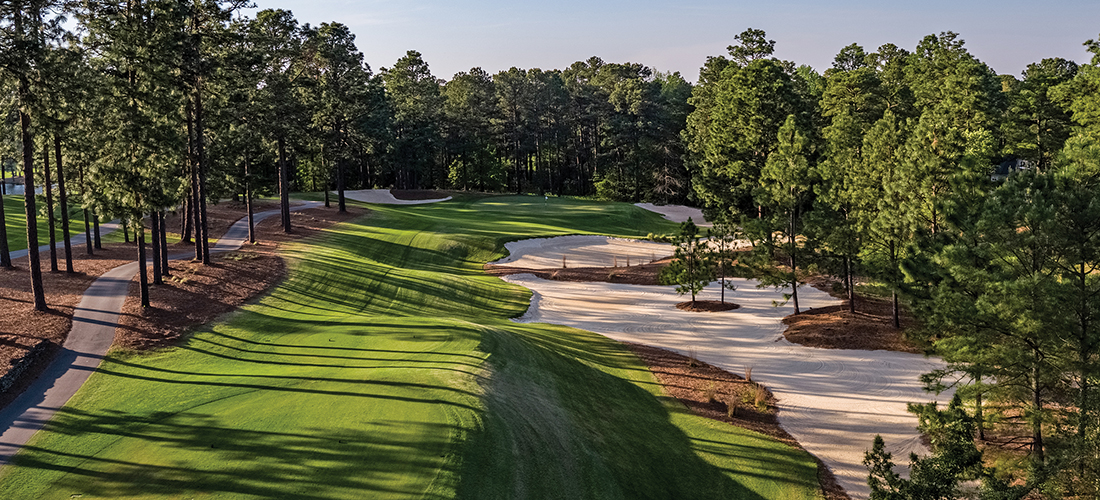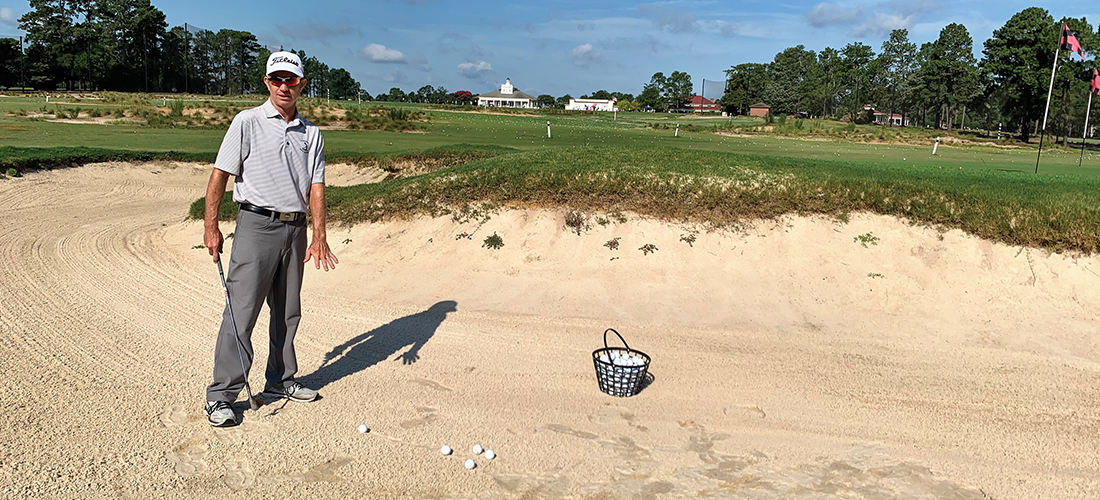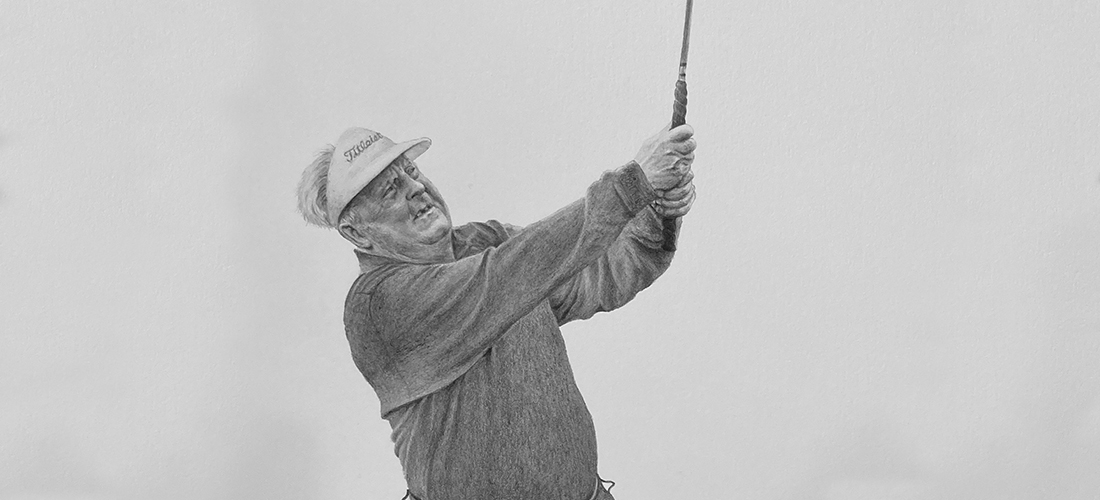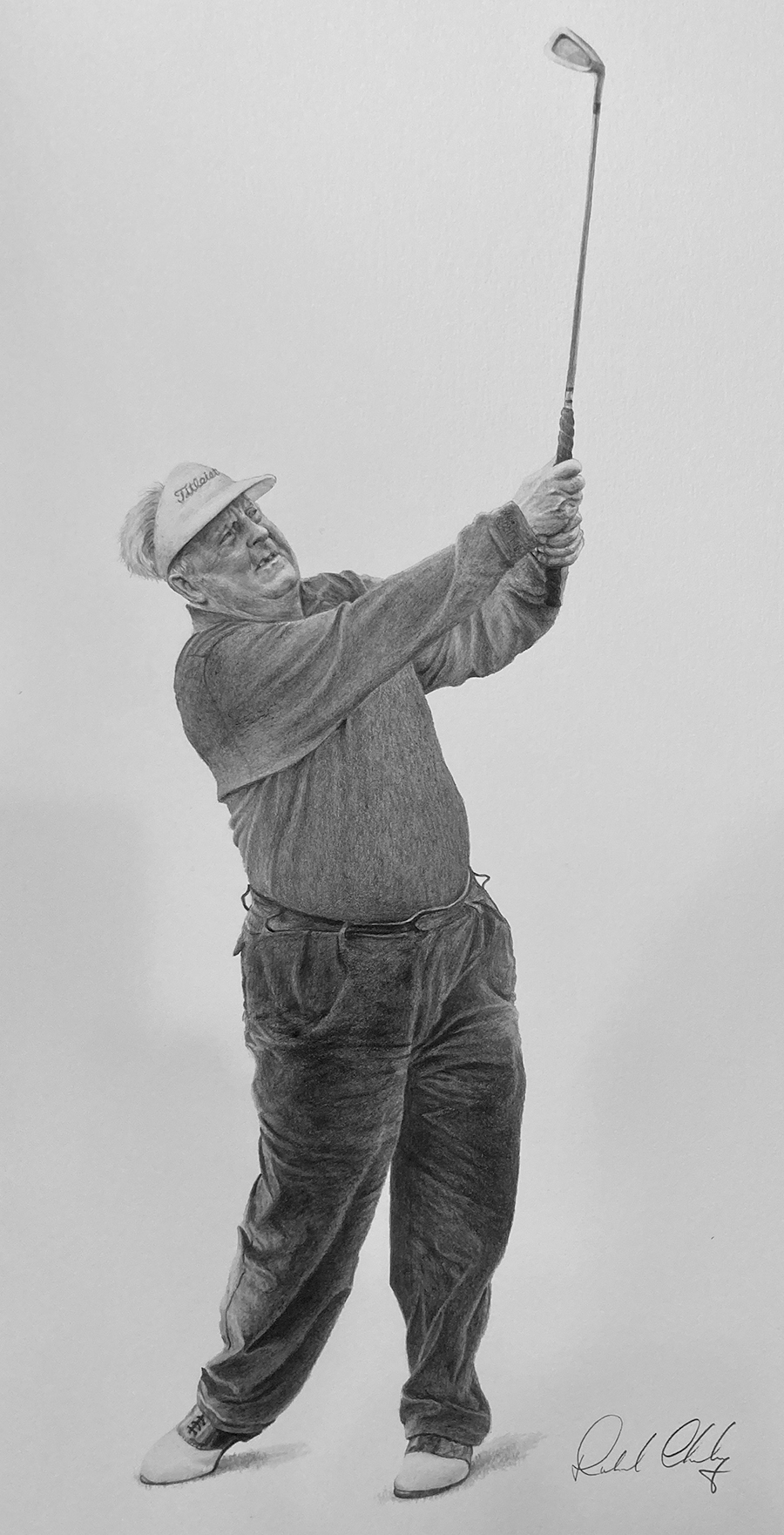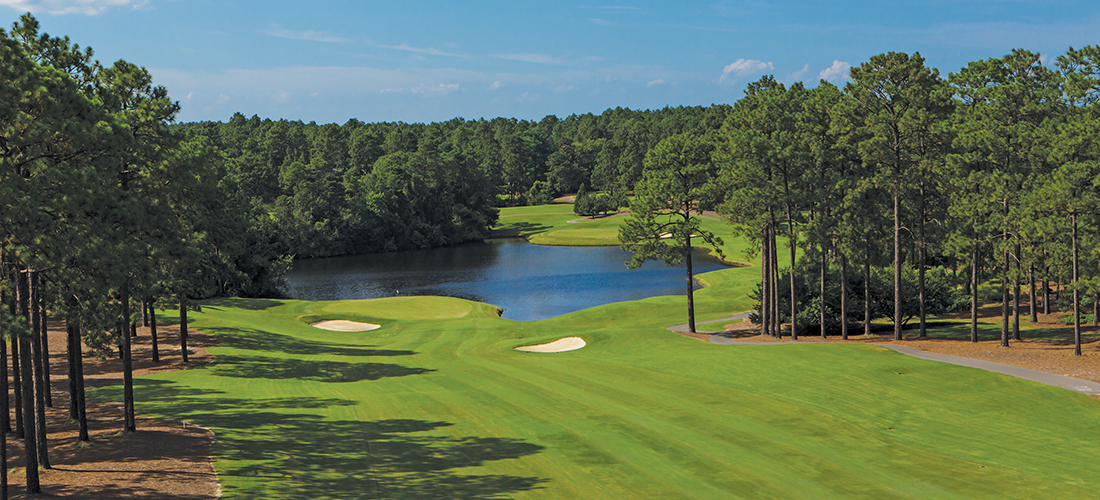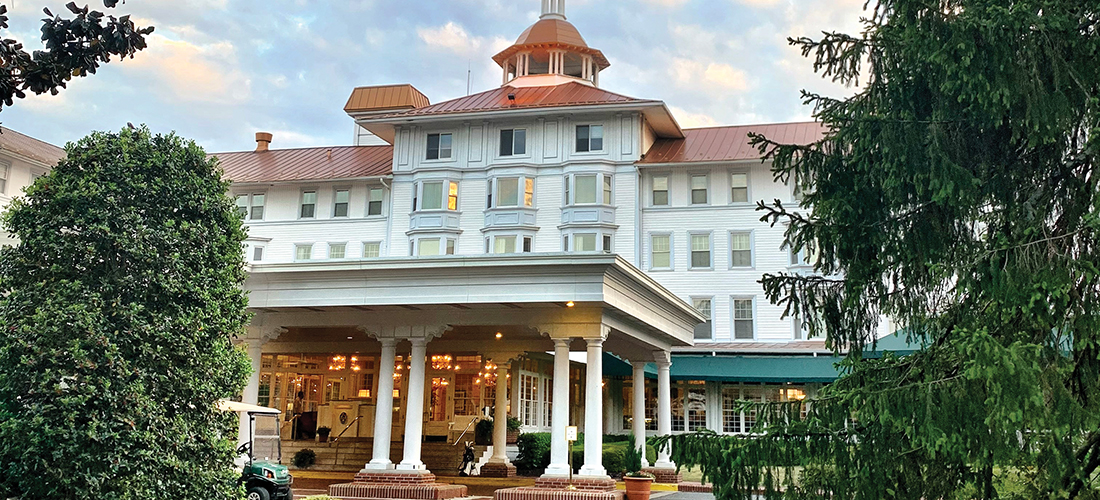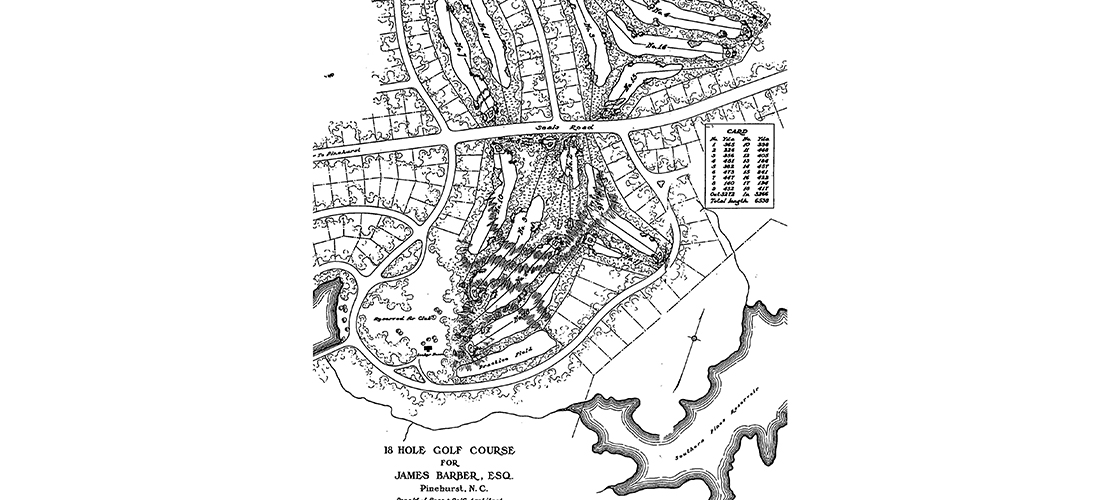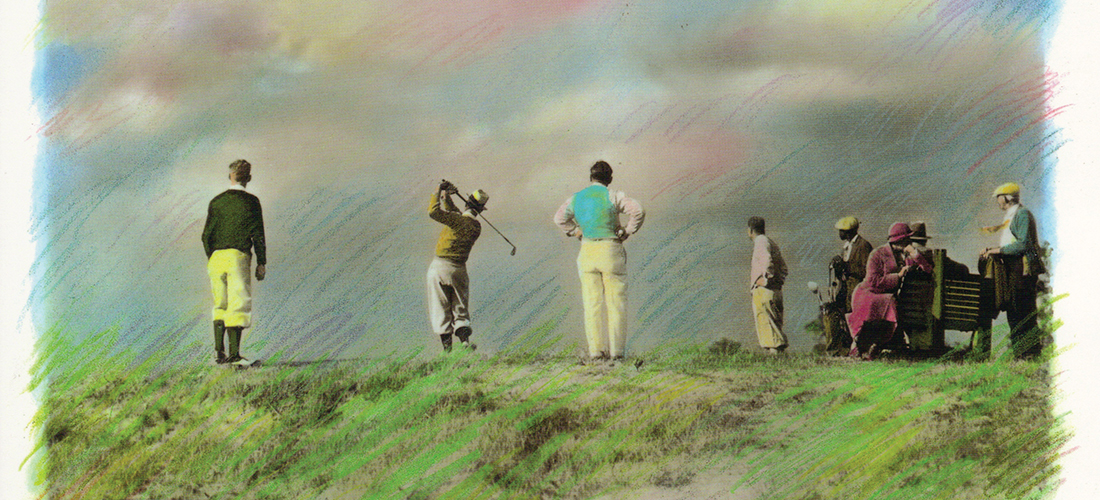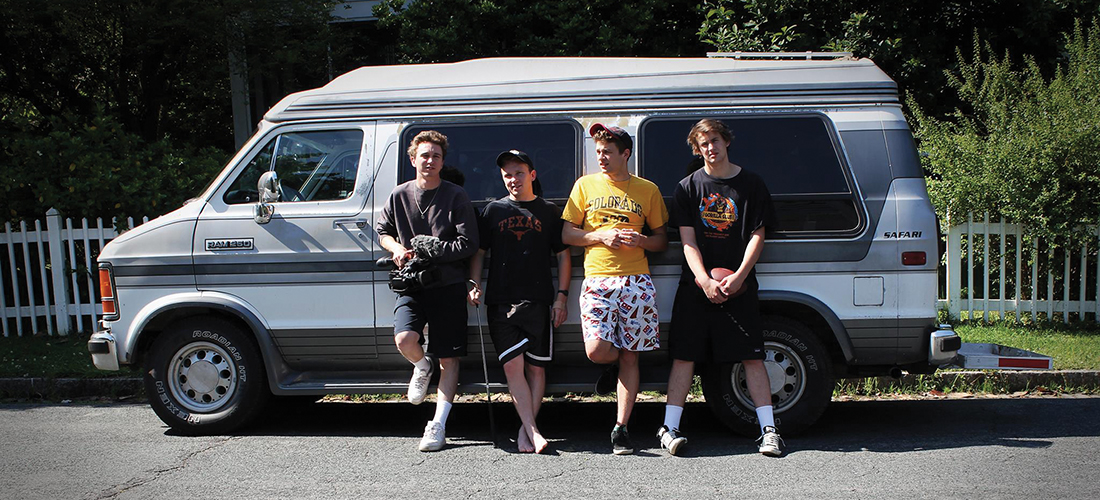A Loop of My Own
When lightning strikes twice
By Lee Pace
I’ve hit many thousands of golf shots over more than four decades, and through early July 2021 two of my favorites had come at Forest Creek Golf Club, the 36-hole facility just northeast of the Village of Pinehurst.
One was a hole-in-one in July 1996. I made an annual trip to Pinehurst in the 1990s with three buddies from Chapel Hill, and we were able to arrange a game at Forest Creek during its first summer of operation. I hit a sweet 6-iron on the sixth hole, and the ball hit the green, bounced and rolled into the cup.
Then, in May 2014, I was invited by Ed Kinney, a longtime friend through our shared affiliations with the University of North Carolina football and basketball programs, to play in the club member-guest. What a memorable weekend — five nine-hole matches on the club’s North and South Courses, a bed in Ed and wife Betty’s comfortable home on Granville Drive, succulent meals, and a lavish gift package (I still have my Scotty Cameron Newport 2 putter).
Ed and I played well together that weekend, and we needed to win our match on Saturday afternoon to collect first place in our flight. We were playing the back nine of the South Course and came to the par-3 17th. The hole was playing fairly long that afternoon, and I hit a 5-wood tight to win the hole and close out our opponents.
That hole is certainly one of the most gorgeous and challenging among the 36 at Forest Creek — a clutch of pine trees and azaleas standing sentinel to the rear, the tree limbs reflected in a pond in front of the green as you gaze from the tee, the rolling higher ground of the eighth fairway in the distance, a very shallow green demanding you get your number dead perfect.
If you’re going to nail the sweet spot and watch that gorgeous right-to-left curve against a deep blue sky, I can’t think of a better venue for it.
Thus I was certainly interested when I received a phone call in early 2018 from one of the partners of Colony 9 LLC, the group that at the end of 2017 had purchased Forest Creek from a consortium of members. They were looking ahead to the club’s 25th anniversary in 2021 and wanted to talk about publishing a book to commemorate the club’s first quarter-century.
One of the interesting (and sobering) elements to tacking on the years is that you find yourself writing anniversary tributes to events you witnessed in real time. I can remember in the early 1990s having a meeting at the Holly Inn in Pinehurst with a fellow named Larry Torrance, who was on the staff of a new club just outside Pinehurst called Bent Creek. It turns out that “Bent Creek” as well as “The Farm” were two early names the developers wanted to use for their new golf venture, but because other clubs in Texas and Georgia, respectively, already had those names, they decided to go with Forest Creek.
I’ve been fortunate to have a front-row seat to the evolution of the Sandhills area since the late 1980s: from the restoration of Pinehurst No. 2 as a venue for major championships to the emergence of Pine Needles as a regular venue for the U.S. Women’s Open; from the explosion of golf courses in the 1990s to the retrenchment in various corners during economic downturns.
Forest Creek has been a major cog in that story. That it is still standing and standing strong is a testament to the original vision, the resolve of the members and the passion and resources that the Colony 9 partnership provides.
A highlight of my two-plus years working on the book to be introduced in late October at a gala 25-year-anniverary celebration has been the occasional late-afternoon walking round with course superintendent David Lee, who I’ve known dating to his previous job at Hope Valley Country Club in Durham. I know David as “Bushwood” and he knows me as “Shooter,” the nicknames bestowed upon us when we joined the early morning men’s workout group known as F3 in the Durham/Chapel Hill area around 2013. That both of our monikers came from the golf movie realm (his from Caddyshack and mine from Happy Gilmore) are testaments to the place golf holds in our lives.
I sought David out for a twilight nine on July 15, 2021, just as the finishing pieces were coming together to form the book. I wanted to enjoy the nirvana of late afternoon golf, bags slung over our shoulders, no hurry in the world, before finishing this essay. I had reflected earlier in the week on my history at Forest Creek and even plowed through some memorabilia to see if I might have saved that scorecard from 1996, but to no avail.
A fierce thunderstorm to the east threatened our outing at 4 p.m., but David checked the radar and thought the weather was moving away from us. So off we set, the only two golfers, it seemed, on the premises.
We embraced the experience — catching up on work, family, our respective workout regimens, the upcoming football season, plugging various leaks in our respective golf games, the stuff guys talk about when they’re going for a walk in a nice park — with a few golf shots thrown in.
We climbed the steep hill leading to the sixth tee. I tried to catch my breath while measuring the distance with my GPS. I pulled my 5-iron for the 168-yard shot. I put a good move on the ball, and it tracked toward the hole. I knew it would be close but couldn’t see just how close, my aging eyes able to see the landing and bounce of a ball but not always the final resting spot.
“Nice shot,” David said, then, looking closer, added, “I think that’s in the hole.”
“Seriously?” I responded.
“That or it’s right behind the stick.”
“Maybe it rolled off the back,” I said.
“No, it definitely did not do that.”
I quickened and lengthened my strides toward the green. No sign of the ball. I got to the hole, leaned over, and sure enough, there it was.
Twenty-five years later — same hole, same month of the year, same one.
I phoned one of my playing companions from a quarter-century ago and marveled over the odds.
“Water has a better chance of freezing at 43 degrees than what you just did,” Mick Mixon said. “That is just eerie.”
David phoned one of his assistants as we were playing the seventh hole and asked him to grab the flag from the sixth hole. “If you make a hole-in-one here, you get to keep the pin flag,” he said. The flag was delivered as we hit our tee shots on eight. It will look splendid with Tom Fazio’s autograph and a nice frame.
All I wanted from that twilight nine was to close the loop on my 25 years at Forest Creek. Consider that box properly checked. PS
Lee Pace has written club histories in the Sandhills area for Pinehurst Resort and Country Club, Pine Needles, Mid Pines and now Forest Creek Golf Club. Contact him at leepace7@gmail.com and follow him on Twitter at @LeePaceTweet.

